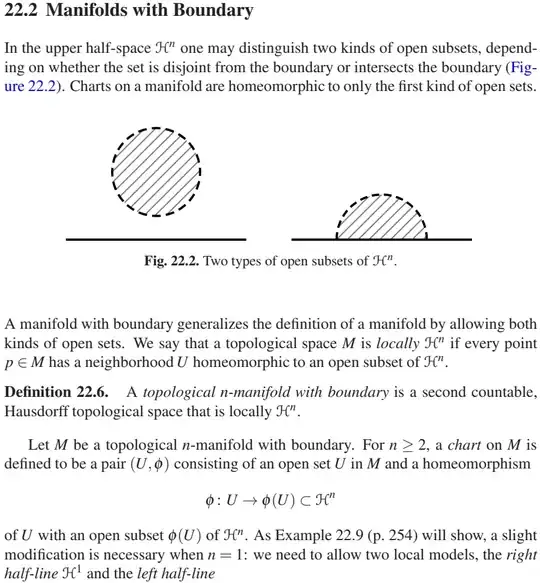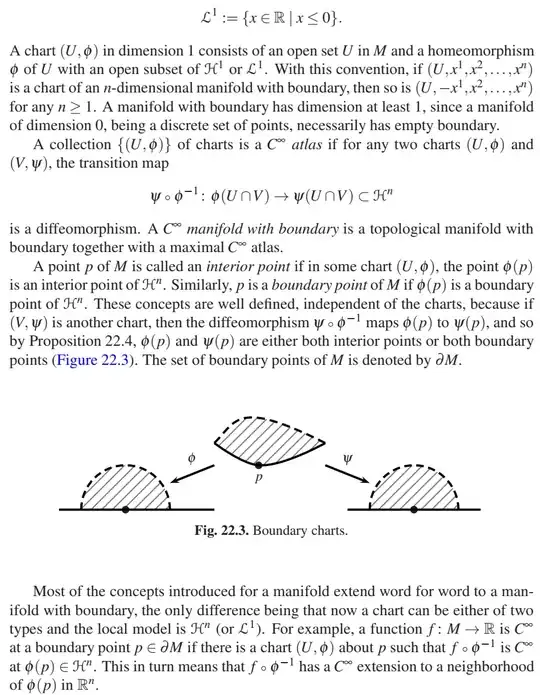My book is An Introduction to Manifolds by Loring W. Tu.
As can be found in the following bullet points
Can a topological manifold be non-connected and each component with different dimension?
Is $[0,1) \cup \{2\}$ a manifold with boundary? My issue is the $2$.
Understanding topological and manifold boundaries on the real line
we have that
Tu's manifolds with or without boundaries do not necessarily have (uniform) dimensions.
Tu has considered manifolds to be manifolds with boundaries (with empty boundaries).
Question: For Definition 22.6 (see here and here), Tu says that "A manifold with boundary has dimension at least 1". Should this instead be "A manifold with boundary has dimension at least 1 if it has a dimension and if it has nonempty boundary" or "An $n-$manifold with boundary with non-empty boundary has $n \ge 1$" (Notice that the prefix "$n-$" precisely gives the manifold with boundary a dimension)?
Embedding photos:

